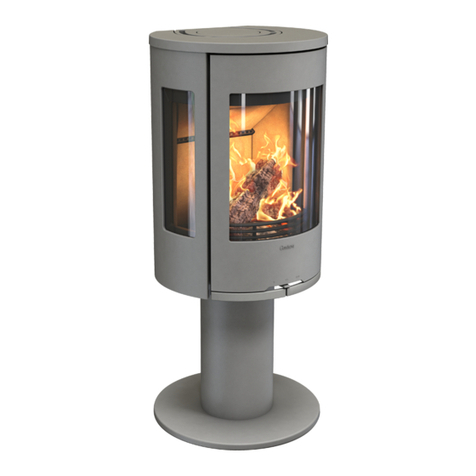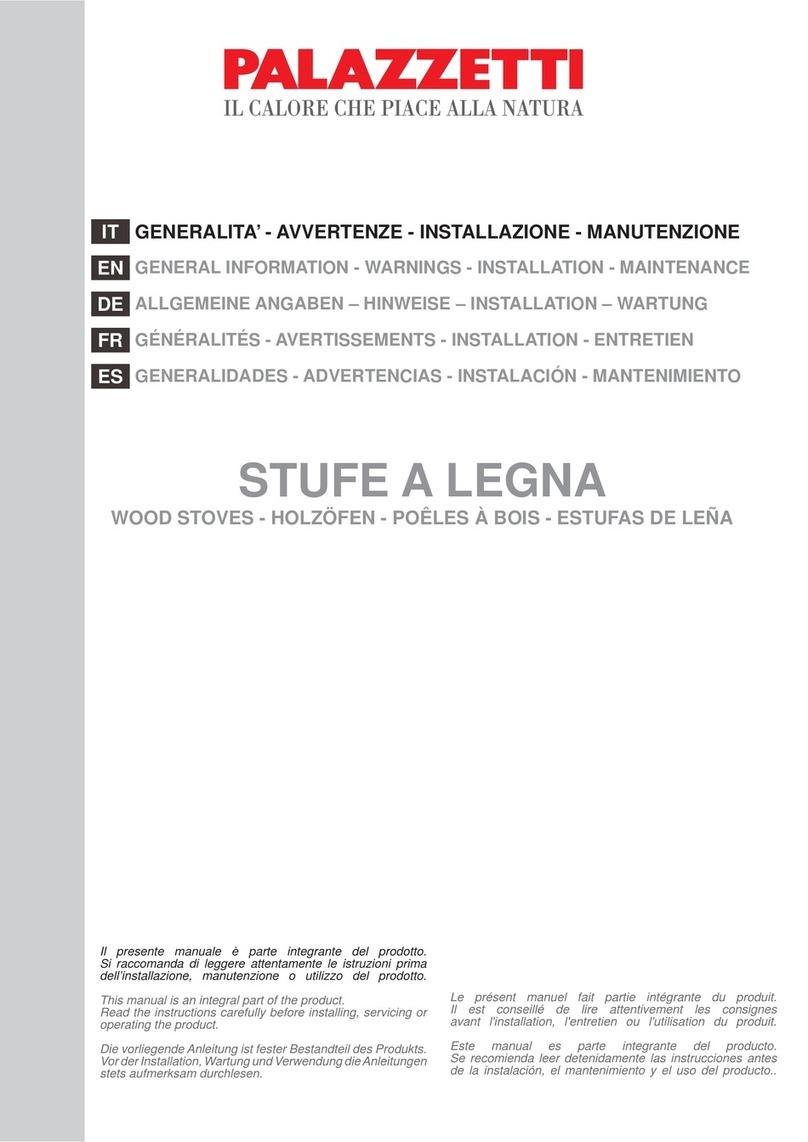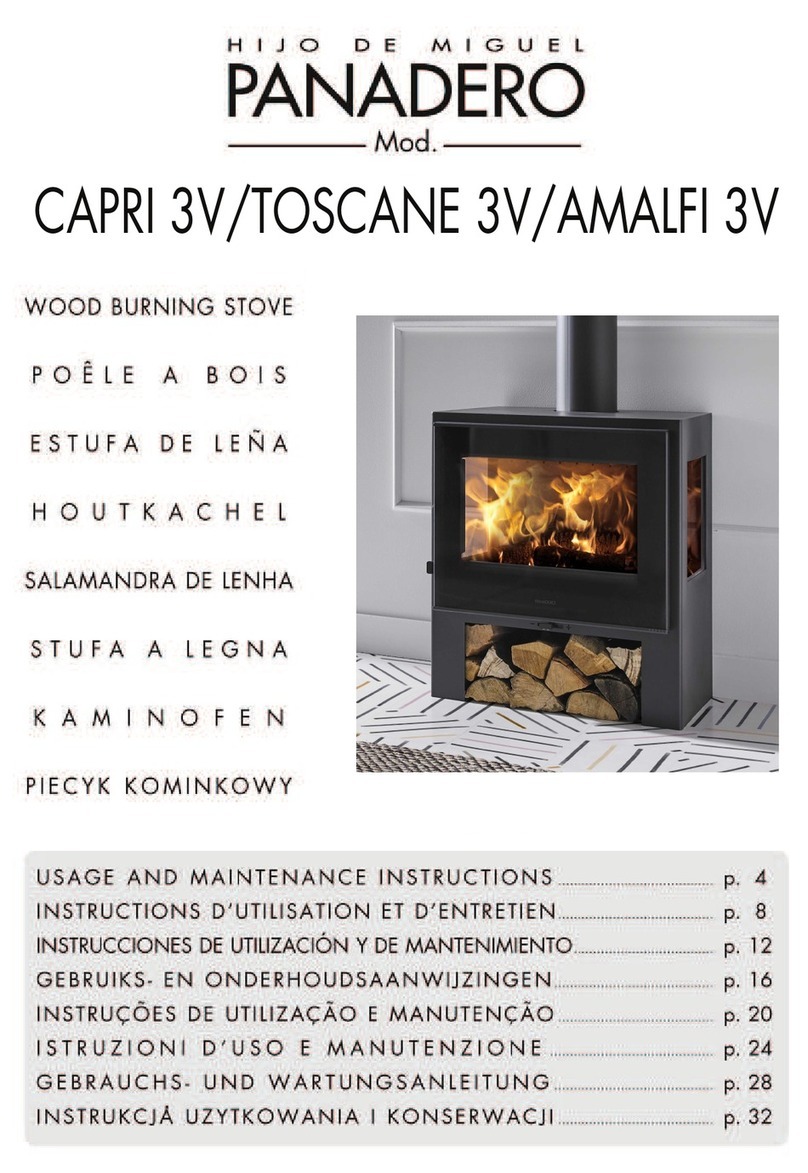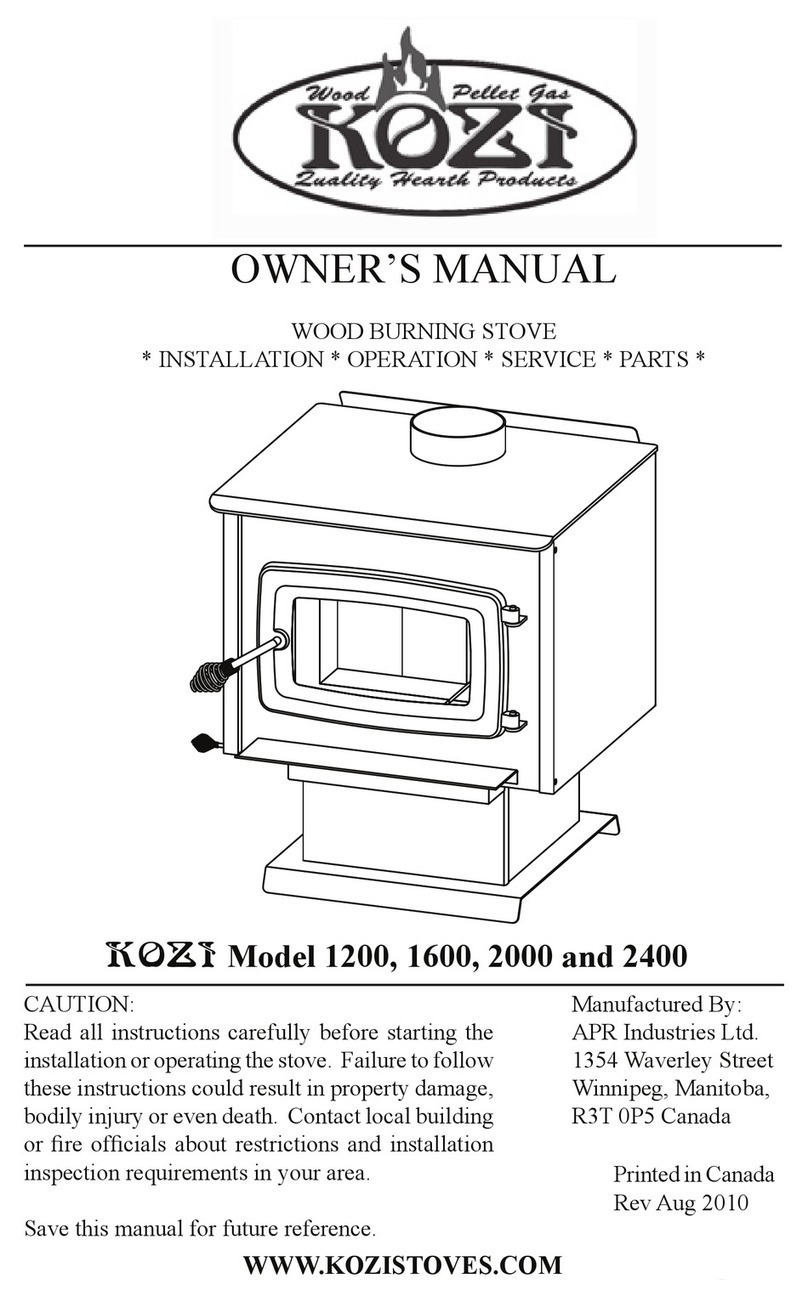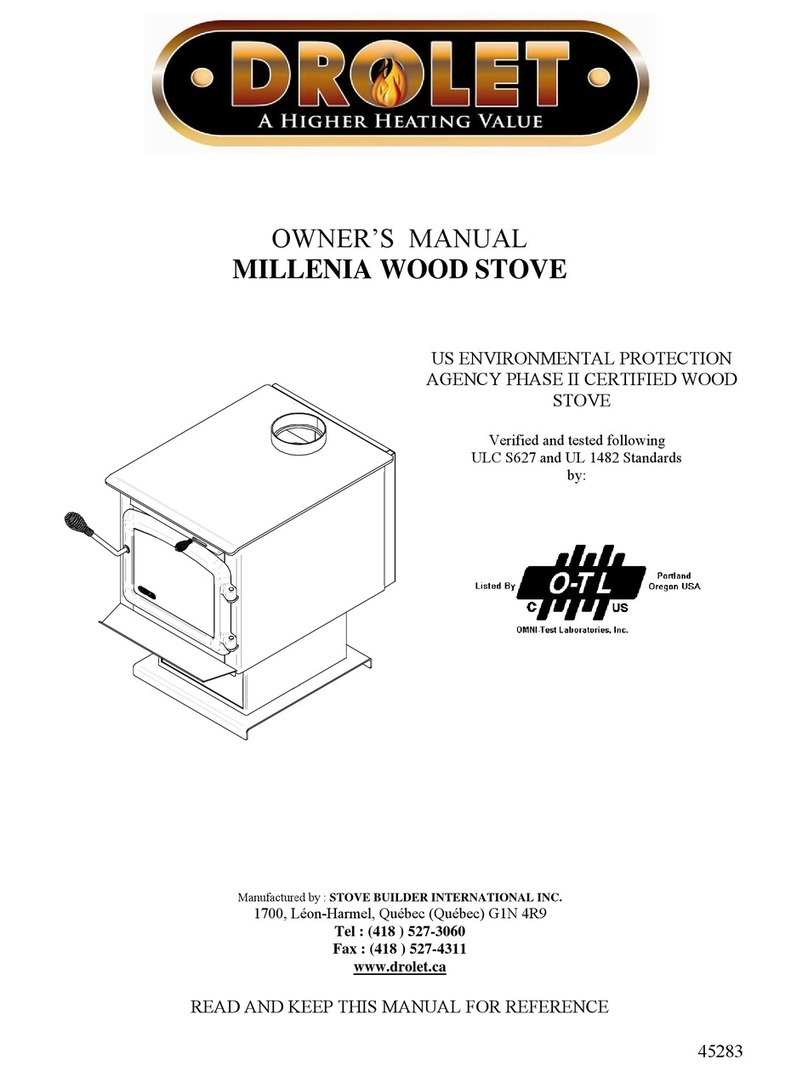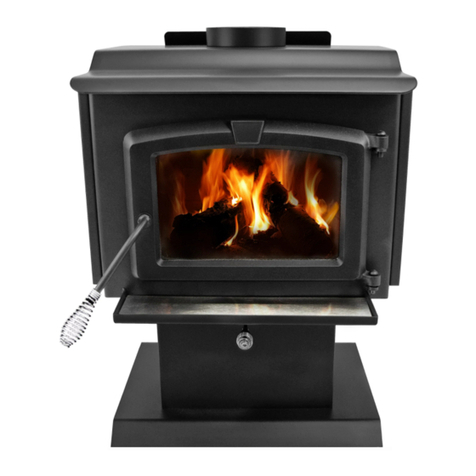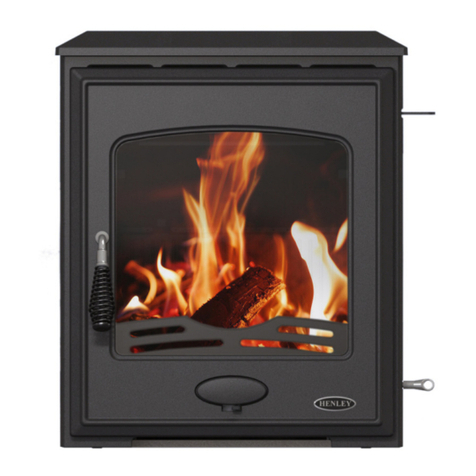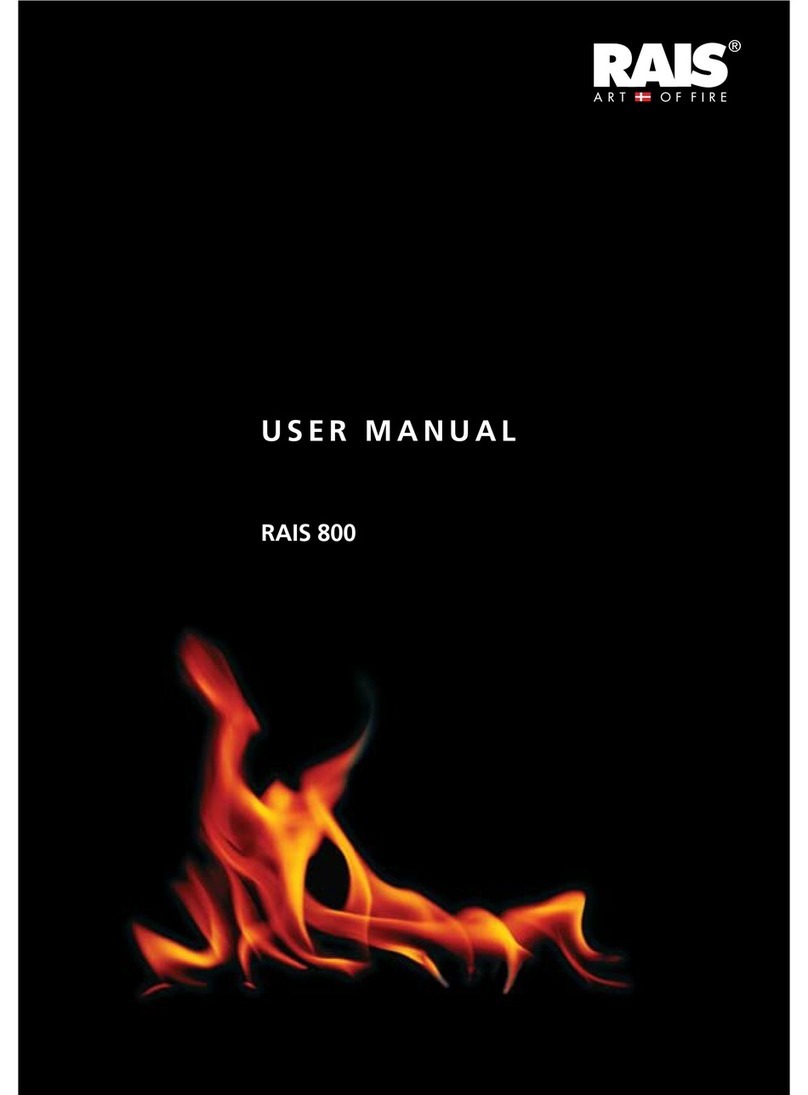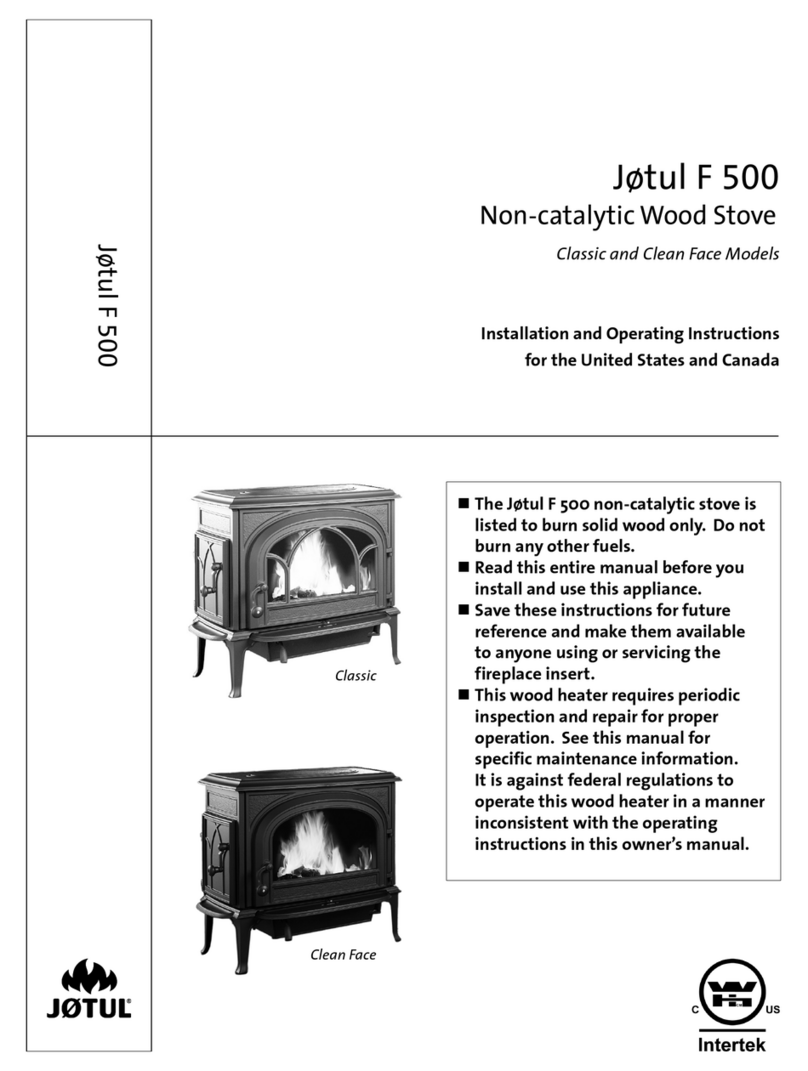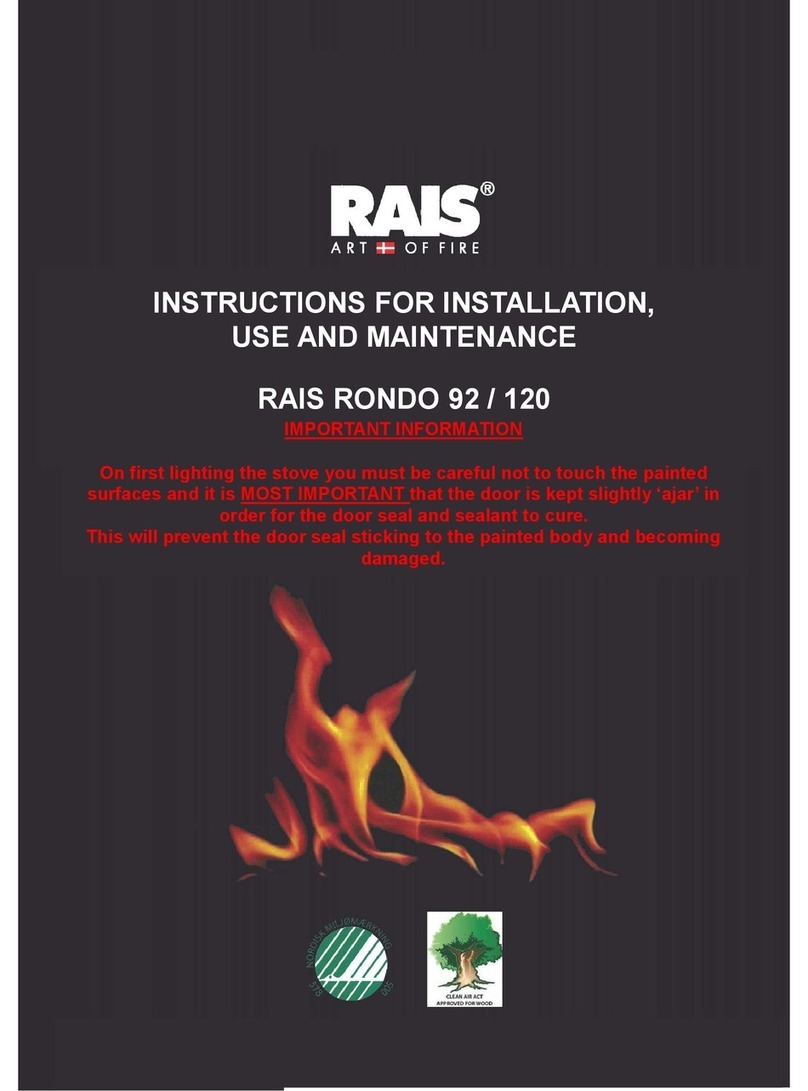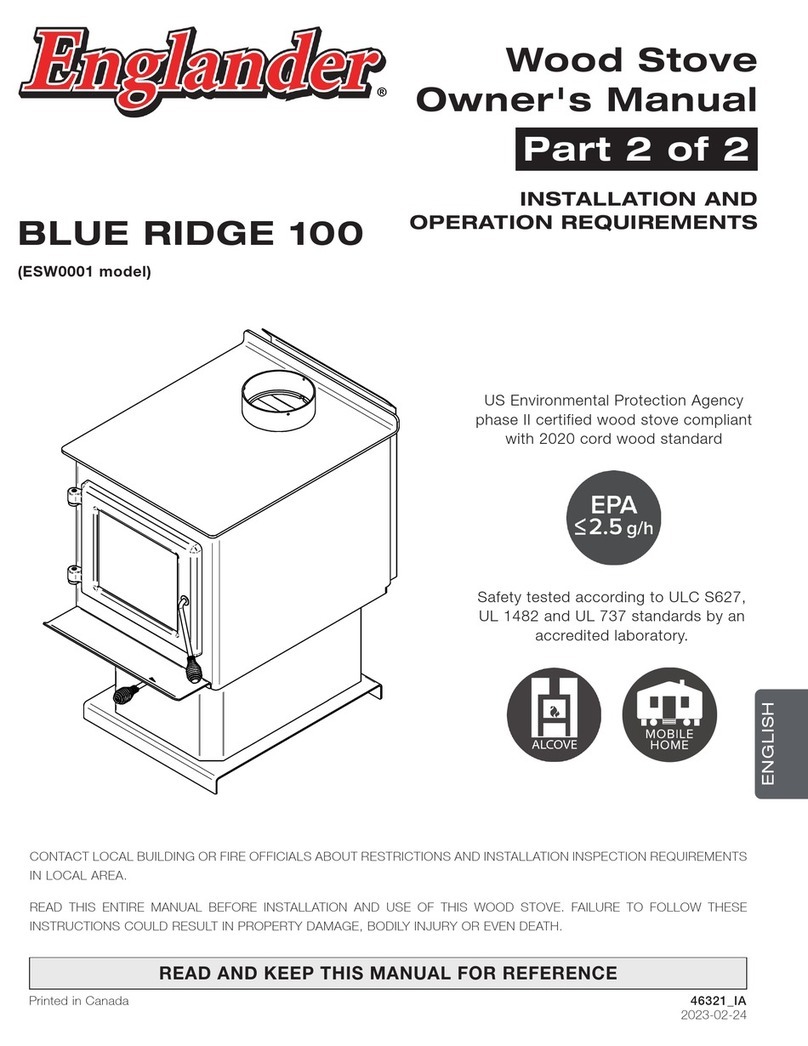
5.1 Ceiling support installation: Use and install
only parts furnished by the manufacturer of the
chimney.
5.2 Chimney lengths installation: Continue
with the installation of the chimney by
positioning lengths with the male end up. The
attic insulation must never be in contact with the
chimney. Allow at least 2" (50 mm) for air space
between the chimney and any combustible
material.
5.3 Minimum chimney height above the roof:
(Drawing 3): Extend the chimney at least 3 feet
(1 m) above the roof or 2 feet (610 mm) above
any construction element within 10 feet (3 m) of
the chimney.
5.4 Flashing water tightness: Install a metal
roof flashing with a storm collar where the
chimney pass meets the roof. Seal the joint
between the chimney and the storm collar and the
joint between the roofing and the flashing.
4.2 Maximum allowed offsets: Don't install
more than 4 elbows in the chimney. Offsets 5.5 Roof braces: Any chimney that extends
cannot be more than 30 degrees from the vertical more than 6 feet (2 m) above the roof needs to be
axis. The sum of all offsets (elbows) must never laterally strengthened with a pair of telescopic
exceed the number 120. For example, maximum roof braces.
allowed offsets would include: two offsets of 30-
degree (4 elbows x 30 degrees =120) or an offset 5.6 Chimney top: Install a chimney round top at
of 30 degrees plus another one of 15 degrees (2 the end of the chimney.
elbows x 30 degrees + 2 elbows x 15 degrees =
90).
4.3 Radiation shield/firestop: Install a radiation
shield/firestop every time the chimney passes 6.1 Stove pipe: Always install the pipes with the
through a combustible floor or ceiling. male end up so that any condensation water can
drip and stay inside the pipe.
4.4 Chimney weight: The weight of the
chimney must be supported at regular intervals
according to the manufacturer's instructions. The
weight of the chimney must never be
supported by the fireplace. In addition, offset
supports must be installed above and as close as
possible to each offset (elbow) in the chimney.
5. Factory-built chimney installation
6. Stone pipe installation
Page 6
10 feet (3 m) Radius
2 feet min (610 mm) min.
3feet (1 m)min.
Warning: Lateral roof braces need to
be installed when the unsupported
chimney height above the roof
is more than 6 feet (2 m).
Chimney minimum height above
the roof
DRAWING 3
REV. 2014-11


